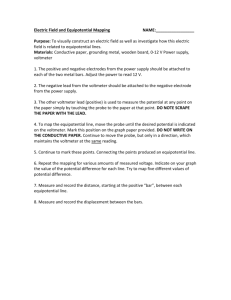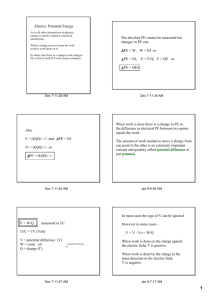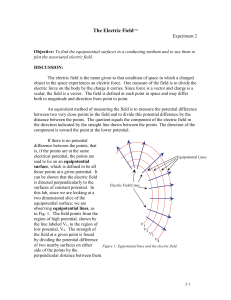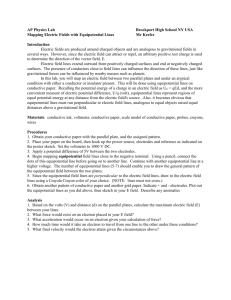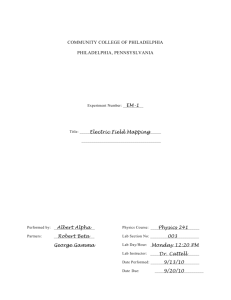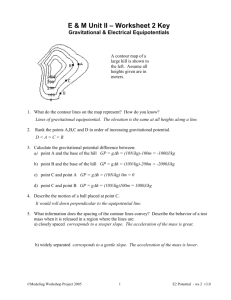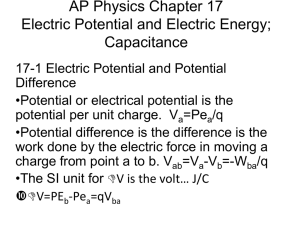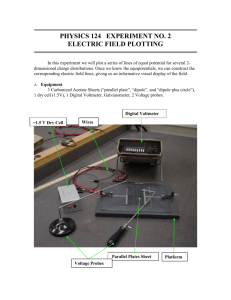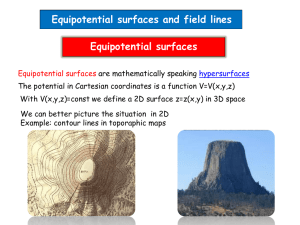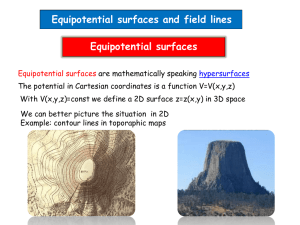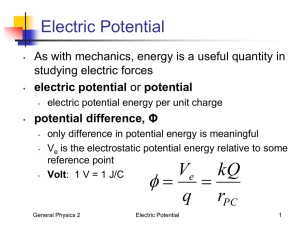AP Physics – Electric Field and Equipotential Mapping
advertisement
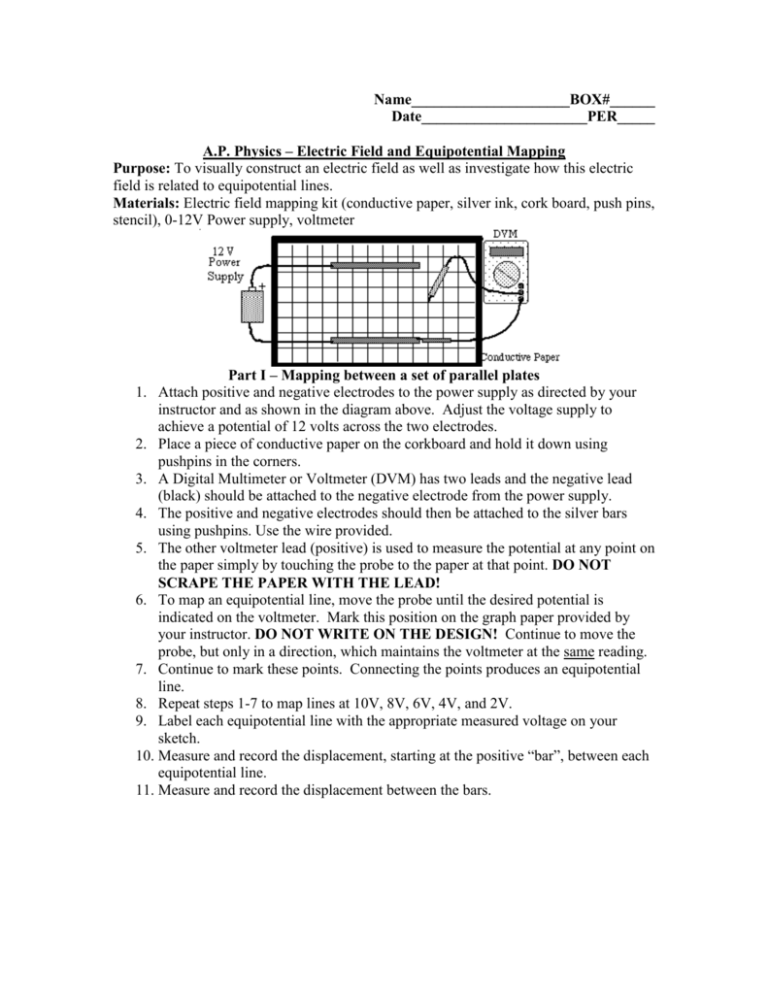
Name_____________________BOX#______ Date______________________PER_____ A.P. Physics – Electric Field and Equipotential Mapping Purpose: To visually construct an electric field as well as investigate how this electric field is related to equipotential lines. Materials: Electric field mapping kit (conductive paper, silver ink, cork board, push pins, stencil), 0-12V Power supply, voltmeter Part I – Mapping between a set of parallel plates 1. Attach positive and negative electrodes to the power supply as directed by your instructor and as shown in the diagram above. Adjust the voltage supply to achieve a potential of 12 volts across the two electrodes. 2. Place a piece of conductive paper on the corkboard and hold it down using pushpins in the corners. 3. A Digital Multimeter or Voltmeter (DVM) has two leads and the negative lead (black) should be attached to the negative electrode from the power supply. 4. The positive and negative electrodes should then be attached to the silver bars using pushpins. Use the wire provided. 5. The other voltmeter lead (positive) is used to measure the potential at any point on the paper simply by touching the probe to the paper at that point. DO NOT SCRAPE THE PAPER WITH THE LEAD! 6. To map an equipotential line, move the probe until the desired potential is indicated on the voltmeter. Mark this position on the graph paper provided by your instructor. DO NOT WRITE ON THE DESIGN! Continue to move the probe, but only in a direction, which maintains the voltmeter at the same reading. 7. Continue to mark these points. Connecting the points produces an equipotential line. 8. Repeat steps 1-7 to map lines at 10V, 8V, 6V, 4V, and 2V. 9. Label each equipotential line with the appropriate measured voltage on your sketch. 10. Measure and record the displacement, starting at the positive “bar”, between each equipotential line. 11. Measure and record the displacement between the bars. V2 (Volts) Data Table V1 d (Volts) (Meters) 12 10 10 8 8 6 6 4 4 2 2 0 (V2 V1 ) d (V/m) E avg Average Uniform Electric Field Displacement between the bars = _______________ Using the equation, V Ed , the total displacement between the bars, and the total voltage, calculate the electric field between the plates. What do you notice about the MAGNITUDE of the electric field between the bars and the electric field between equipotential lines? Calculate a % difference between the electric field between the bars and the electric field between equipotential lines Sketch in the electric field lines on your equipotential map. What do you notice about the orientation of the electric field lines and the equipotential lines? What kind of relationship is there between Voltage and Displacement? What was constant in this experiment? Part II – Mapping between a set of parallel plates with a floating conductor. Remember that VOLTAGE means POTENTIAL DIFFERENCE. That is why we used the equation (V V1 ) E avg 2 in part I. d Using the same procedure from part I , map several equipotential lines around the floating conductor and sketch and label these lines on the paper provided. 1. Measure and record the diameter of the floating conductor. Diameter = _____ 2. Measure and record the voltage INSIDE the conductor. Do this for TWO points on the vertical axis as well as horizontal axis. V2vertical V1 vertical V2 horizontal V1 horizontal 3. Identify the points you choose on the picture below. What is the magnitude of the electric field INSIDE the conductor and justify your answer in detail. Does the floating conductor have any kind electric field at all? Explain. If so, sketch the electric field lines from the conductor on the paper provided.

